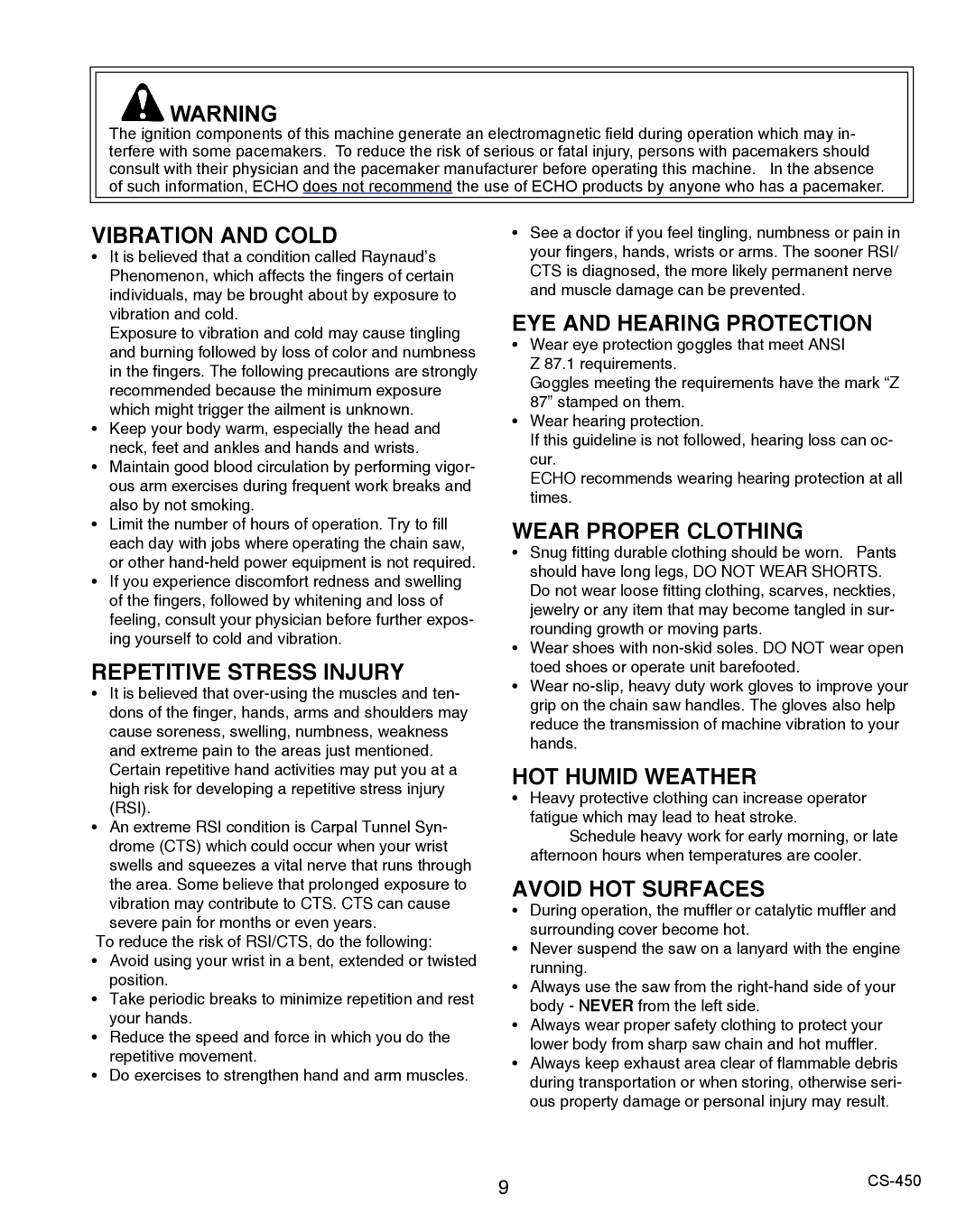2CS-450, CS-450 specifications
The Echo CS-450 is a powerful and versatile chainsaw designed for both professional and home use. Renowned for its reliability and performance, the CS-450 is an ideal choice for tree care, land management, and firewood cutting. With its robust design, it stands out as a dependable tool for various cutting tasks.One of the standout features of the Echo CS-450 is its engine. It is powered by a 45.0 cc, 2-stroke engine that delivers exceptional power while maintaining fuel efficiency. This engine translates to a power output of approximately 2.7 kW, allowing users to tackle demanding cutting jobs with ease. The chainsaw also incorporates a patented i-30 starting system, which reduces the effort required to start the engine. This feature significantly enhances user experience, especially during cold starts or extended use.
The CS-450 is equipped with a 20-inch guide bar, making it suitable for medium to large cutting tasks. The bar length provides a good balance between maneuverability and cutting capacity. Additionally, the chainsaw operates with a low-kickback chain, improving user safety while offering smooth and efficient cutting performance. This is especially important for both novice and experienced users, as it minimizes the risk of accidents.
In terms of design and ergonomics, the Echo CS-450 is built for comfort and ease of use. The chainsaw features an anti-vibration system that reduces operator fatigue during prolonged use. Its lightweight construction, weighing around 10.1 lbs, makes it easy to handle without sacrificing power. The front and rear hand grips are designed for enhanced comfort, allowing users to maintain good control over the saw.
The CS-450 is also equipped with a tool-less air filter cover and a side-access chain tensioner, making maintenance straightforward and efficient. The cleaner air filter helps extend engine life, while the quick chain tensioning system allows users to make adjustments effortlessly on the job.
For those who value durability, the Echo CS-450 features a heavy-duty build that includes a magnesium crankcase, resisting wear and tear under demanding conditions. The chainsaw is designed to operate in various environments, whether it be professional settings or home gardening tasks.
In summary, the Echo CS-450 combines power, efficiency, and comfort in a robust design. With its advanced features, including a high-performance engine, safety mechanisms, and user-friendly design elements, it remains a top choice for individuals seeking a reliable and effective chainsaw. Whether you are cutting firewood or maintaining trees, the CS-450 is an excellent partner to get the job done efficiently and safely.

